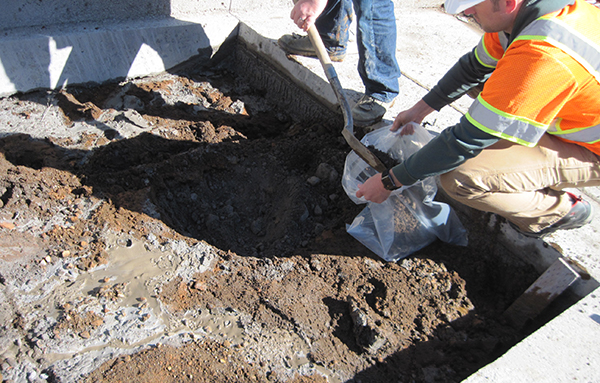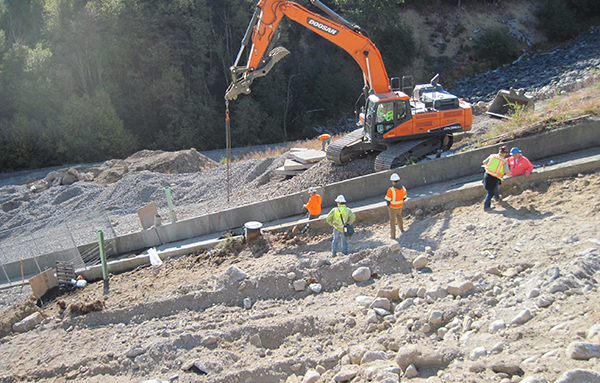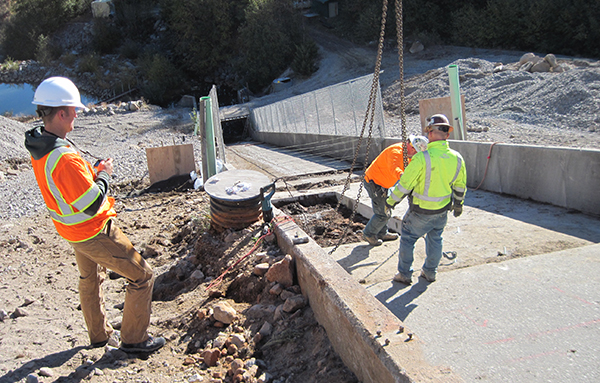Clear Branch Emergency Spillway Repair



On June 9, 2017, the annual Safety Inspection of the Clear Branch Dam identified a 2-inch vertical offset in one section of the emergency spillway. The Federal Energy Regulatory Commission (FERC) requested an urgent inquiry of the offset section. The Middle Fork Irrigation District (MFID) promptly began monitoring and hired Kleinschmidt to conduct assessments to address excessive seepage issues and movement of the spillway concrete slabs.
Kleinschmidt worked with a geotechnical subconsultant to gather and review available information regarding the construction activities, site geology, historic seepage issues, drain installation and repair information, and historic and current instrumentation data. The team recommended supplementing the existing information and performing analyses to evaluate Potential Failure Modes (PFMs).
The studies included field explorations, in-situ soils testing, and laboratory testing of soil and rock including installation of new vibrating wire piezometers (VWPs) and dataloggers to enhance the surveillance and monitoring capabilities of groundwater levels within the dam and its abutments. The second phase investigated causes and remediation of damage to the emergency spillway. Understanding the source and volume of seepage under the spillway slab as well as the cause of the slab movement were key to developing mitigation measures. The Kleinschmidt team designed remediation measures to replace the damaged spillway sections and to upgrade the drainage measures on the downslope side of the dam. The repair consisted of replacing lateral drains along the spillway, construction of new under-slab drains, and replacement of 50 feet of the concrete spillway chute. The team provided continuous onsite construction observation during lateral and under-slab drain construction.
The investigation, design, and repair were completed in one construction season, competing with a narrow weather window to complete the project. The team’s rapid response reduced MFID’s risks, allowed appropriate and detailed response to dual agency interest (FERC and NRCS), while enhancing relationships with FERC investigators.
